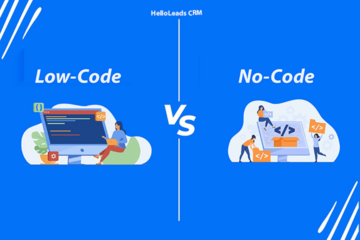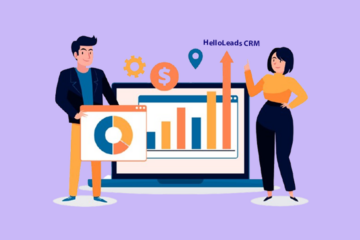
“Your most unhappy customers are your greatest source of learning.”
– Bill Gates, philanthropist and Founder of Microsoft
In today’s competitive marketplace, customer satisfaction is more than just a metric—it’s the cornerstone of a successful business. Happy customers are not only more likely to return but also to recommend your products or services to others, driving growth through word-of-mouth and repeat business.
But how can you accurately assess your customers’ true satisfaction? And once you have that information, what steps can you take to enhance their experience?
In this comprehensive guide, we will walk you through the best practices for measuring customer satisfaction and provide actionable strategies to boost it. Whether you’re a small business owner or a seasoned executive, understanding and improving customer satisfaction can lead to better loyalty, increased revenue, and long-term success. Let’s dive in and discover how you can turn satisfied customers into your most valuable advocates.
8 steps to measure customer satisfaction

1. Define your goals
Before you begin measuring customer satisfaction, it’s crucial to clearly define your objectives. Knowing what you aim to achieve will direct your entire approach and ensure your efforts are focused and effective.
Ask yourself: Are you looking to enhance a specific touchpoint in the customer journey, such as the checkout process? Or do you want a general understanding of overall sentiment towards your brand?
Setting clear objectives:
Specific touchpoints: If your goal is to improve a specific interaction, like the checkout process, concentrate your survey questions on that particular area.
Overall sentiment: For a broader view of customer satisfaction, ensure your survey covers various aspects of the customer experience, from product quality to customer service.
By establishing well-defined goals, you can customize your questions to gather the most relevant data, which will help you make more informed decisions.
2. Craft a strategic plan
Develop a comprehensive plan for gathering feedback.
With your goals in mind, the next step is to craft a strategic plan for collecting customer feedback. This involves choosing the right tools and determining how you will analyze the data you collect.
Choosing the right tools: Decide on the methods you will use to gather feedback. Options include surveys, reviews, social media monitoring, or direct customer interviews. Each tool has its strengths and is suited to different types of feedback.
Data analysis strategy: Plan how you will process and analyze the collected data. Determine the metrics you will focus on and the software or methodologies you will use to analyze the responses.
By having a solid plan in place, you can streamline the feedback collection process and ensure you are equipped to handle the data effectively.
3. Pick your satisfaction survey weapon
Select the most appropriate type of survey for your goals.
Surveys are a powerful tool for measuring customer satisfaction, but different types serve different purposes. Here are two popular options:
Net promoter score (NPS): This metric measures customer loyalty by asking a simple question: “How likely are you to recommend us to a friend or colleague?” Responses are given on a scale of 0-10, categorizing customers into Promoters, Passives, and Detractors. NPS is effective for gauging overall loyalty and predicting growth.
Customer satisfaction score (CSAT): This score measures satisfaction with a specific interaction or experience. For example, “How satisfied were you with our customer service?” on a scale of 1-5. CSAT provides immediate feedback on particular aspects of the customer journey.
Choosing the right type of survey depends on what you want to measure —overall loyalty or satisfaction with specific interactions.

4. Craft a compelling survey
Design a survey that is engaging and effective.
Creating an effective survey is crucial for obtaining valuable feedback. A well-designed survey is concise, easy to understand, and covers all necessary aspects without overwhelming the respondent.
Survey Design Tips:
Keep It Short: Long surveys can lead to survey fatigue, where respondents lose interest and provide less thoughtful answers. Aim for brevity while covering essential questions.
Use Mixed Question Formats: Incorporate a mix of multiple-choice questions for quantitative data and open-ended questions for qualitative insights. This approach allows you to gather comprehensive feedback.
Clear and Simple Language: Ensure that the language used in the survey is straightforward and easily understood by all respondents. A compelling survey will encourage more customers to participate and provide honest, valuable feedback.
5. Choose your survey trigger
Decide the optimal moments to send surveys.
The timing of your survey can significantly impact the quality and relevance of the feedback you receive. Identifying the right moments to trigger a survey ensures that the experience is fresh in the customer’s mind.
Common Survey Triggers:
After a customer service interaction: Immediately following an interaction with your support team can help gauge the effectiveness of your customer service.
After a purchase: Surveying customers shortly after a purchase can provide insights into their satisfaction with the product or service.
At the end of a free trial: Understanding whether customers are satisfied at the end of a free trial can help predict conversion rates and identify areas for improvement.
Selecting appropriate triggers ensures that you capture timely and relevant feedback.
6. Select your survey platform
Choose a platform that meets your needs.
There are many online survey tools available, each offering different features and integrations. Selecting the right platform is crucial for smooth data collection and analysis.
Factors to Consider:
Integration: Choose a survey tool that integrates well with your existing systems, such as your CRM or email marketing software.
Features: Look for features that match your needs, such as email distribution, real-time reporting, and customizable templates. Popular options include SurveyMonkey, Typeform, and Google Forms.
A well-chosen platform will make it easier to distribute surveys and analyze the results efficiently.
7. Analyze the data like a Pro
Interpret the data to uncover actionable insights.
Collecting data is just the beginning; the real value lies in analyzing it to understand trends, identify areas for improvement, and gauge overall satisfaction levels.
Data analysis steps:

Identify trends: Look for patterns in the responses to identify common themes or recurring issues. This can highlight areas that consistently receive positive or negative feedback.
Segment responses: Analyze data by different customer segments, such as demographics, purchase history, or engagement level. This helps you understand how different groups perceive your business.
Use visualization tools: Tools like charts, graphs, and heat maps can make it easier to interpret complex data and communicate findings to stakeholders.
Effective data analysis will provide clear insights into your customer satisfaction levels and highlight specific areas for improvement.
8. Adapt and improve
Use the insights to enhance your customer experience.
Based on the findings from your analysis, take actionable steps to improve your processes or offerings. Customer feedback is invaluable for driving continuous improvement.
Implementation Tips:
Address common complaints: Tackle issues that are frequently mentioned by customers to prevent them from recurring.
Enhance positive aspects: Identify and strengthen the aspects of your service that receive positive feedback.
Communicate Changes: Let your customers know that their feedback has led to tangible improvements. This demonstrates that you value their input and are committed to enhancing their experience.
Continuously measuring customer satisfaction and making necessary adjustments ensures that you remain responsive to your customers’ needs and expectations.
Conclusion
Customer satisfaction is a journey, not a destination. By consistently measuring and enhancing your customers’ experiences, you can create a loyal customer base and ensure sustainable business growth. Remember, the key to success lies in understanding your customers, acting on their feedback, and continually striving to improve. Now, go forth and measure your way to customer satisfaction success!
Share this blog :










